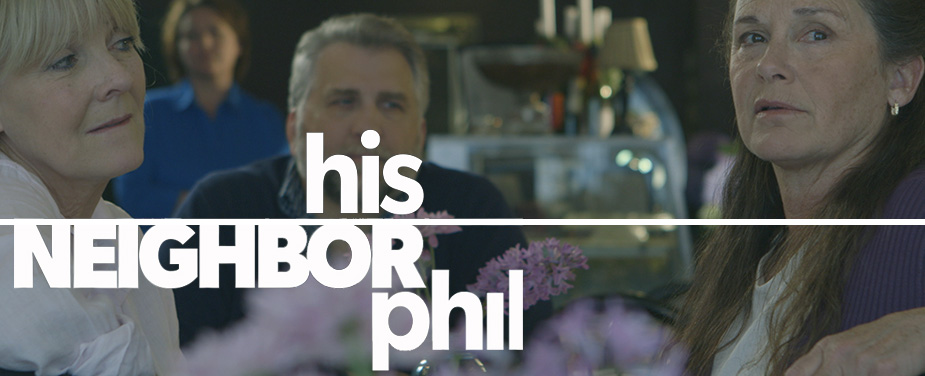Why Are There Not Enough Caregivers To Help The Elderly
Why Are There Not Enough Caregivers
To Help The Elderly
By Carole Larkin, ThirdAge Services
Today we focus on getting help in the home caring for your elderly loved one (with or without dementia).
This is insider information taken from the leading academic journal in the United States called “Generations”. It is produced by the foremost academic and professional organization in America, The American Society on Aging. All content in their journal is researched and documented by the highest credentialed researchers in Aging topics. For more information on “Generations” and the American Society on Aging go to: www.generationsjournal.org and www.asaging.org. All information in quotation marks is directly from the Spring 2016 issue of Generations. (Volume 40 number 1)
Question: Why are there not enough caregivers to help the elderly (with and without dementia)?
Answer: There are a number of reasons why we in the United States are having trouble getting quality help, or sometimes any help at all to care for our loved ones at home.
- There is a lack of people available to do home care jobs relative to the number of people who need their services. As you’ve heard over and over again, there are a huge amount of baby boomers now getting old enough to need care, added to the fact that people are living longer than they used to, and they also need care. Baby boomers did not have enough children to replace themselves, so there is a much lower population of people of working age (25-54) to tend to older adults who need help. “demand for direct care staff during 2002 through 2012 rose by 917,000, while demand from 2012 through 2022 is projected to be 1.3 million-a 43 percent increase. What is far less visible is a tectonic shift in the supply of the traditional source of the direct care workers: WOMEN ages 25-54. Between 2012 and 2022 the net number of women entering the workforce will be only 227,000, compared to the net demand increase of 1.3 million direct care positions.”
- And not every person of the 25-54 years old age group is going to become a home care worker, of course. They’ll be any one of a number of other professions, like doctor, lawyer, teacher, etc. And there is a much worse shortage of these people in rural areas than in the cities, as younger people continue to desert those areas for better paying jobs in the urban areas.
- Added to all that, the home care jobs themselves are low quality jobs. Very often the pay is low, there are no benefits like health care, or, work schedules are unpredictable and are mostly part-time. “Thus, it is difficult to recruit paraprofessionals from other low wage jobs when those jobs make fewer demands, and pose less risk for injury, or emotional and physical strain.” (Think McDonalds, Walmart, etc.)
Question: What can be done to help fix this situation?
Answer: Well, the most obvious answer is of course to give the home care workers higher pay, more benefits and a more predictable schedule. That would immediately attract more people to those jobs.
Question: Can that be done?
Answer: Aha, now we enter the heart of the matter. Well, in the past and continuing through this moment, there has been no political or societal will to change things. There has been and still is, no value given to the services that home care workers perform for us.
- Society gets care for free from family members. The thought is why pay others to do the same job and certainly why pay them even more to do the same job? Society takes both sets of care for granted in the past, and even today. Elderly, sick and disabled people don’t contribute to our Gross National Product, so they are a negative force as opposed to a positive force in our economy. There can be no value given to those who care for them. Everyday people would have to change their minds and decide there is value in caring for our elderly, diseased and disabled as opposed to seeing it as a drain on our society. I don’t see that change in attitude happening any time soon. Do you?
- All the groups in society who can effect change (called “stakeholders”) and who pay for caregivers have no desire to REALLY change the way things are. These “stakeholders” are “Policy makers (the government and politicians), insurers (health insurance companies), employers, and consumers (regular people).” Oh, government may hold hearings, insurance companies may issue a few long term care policies that pay towards agency caregivers, a few employers allow benefits towards caregiving, consumers complain of having no help, but don’t do anything but complain about it. But really none of those things significantly affect the status quo.
- The government tried to improve pay for a substantial number of homecare workers by having the Department of Labor include them as part of the general workforce for the first time, giving them the right to receive the minimum wage and receive overtime pay when they worked more than 40 hours a week starting January 1, 2015.The Home Care Association of America (both home care companies paid by Medicare and/or Medicaid and home care companies paid by individuals) sued the Department of Labor to stop the rule from being implemented. They lost. The Supreme Court ruled on October 13, 2015 and set enforcement to start 30 days later.
(November 12, 2015.)
- The companies got around the rule (for the most part) by reducing their caregivers’ hours to less than 40 hours a week, effectively making them part-time employees, not subject to overtime. To be fair, some private companies did ask their clients if they would pay overtime costs to keep their same caregivers over 40 hours a week. Few families decided to pay more money to the caregiving companies, opting to have more caregivers come to their houses to cover caregiving tasks if they had more than 40 hours caregiving time in a week. For many families with a person with dementia, this caused more confusion and upset for the person with dementia suddenly having a stream of people coming in to care for them, instead of just 1 or 2 persons a week. Either way, by homecare company choice, or by family choice, those most vulnerable were hurt. This devaluing of the person with dementia and of the caregiver is happening now, and will continue into the future because there is nothing in place to change it.
So, in summary, expect things on this front to get worse before they get better (if ever) because of a lack of people to do the job, and because the people who do the job are overworked and underpaid. In this instance, it’s fair to say that we are getting what we are paying for. Are you ready to pay more to get quality caregiving? Think about that.
Carole Larkin with ThirdAge Services 











Hi Carole, good article about the impending labor shortage. I’m not sure that this topic is as visible as it should be. Although the issue will undoubtedly get worse due to the reasons you cite, organizations such as Argentum are leading the exploration of recruiting from benevolent, foreign societies such as the Phillipines to ease the strain. These efforts may not keep the cost of caregiving from rising a bit, but it should keep them from rising out of control. Thoughts?
On a different note- some of the labor shortage could be addressed with new/innovative assistive products which allow a person to “help themselves” if they have mobility problems. Safely getting in/out of bed is a critical part of life- please check out http://www.FriendlyBeds.com.
This is largely a problem of who will pay for long term care. In order to pay enough to make is worthwhile for people to work as reliable, skilled caregivers, we have to make the pay more attractive. At the same time, that drives up the cost to the consumers, the elderly fixed-income consumers of care. Ultimately, it’s become so expensive to employ and retain caregivers that many elderly consumers cannot pay for their own care. Sad.
HI Tim
You so right! Thanks for writing in.
Lori